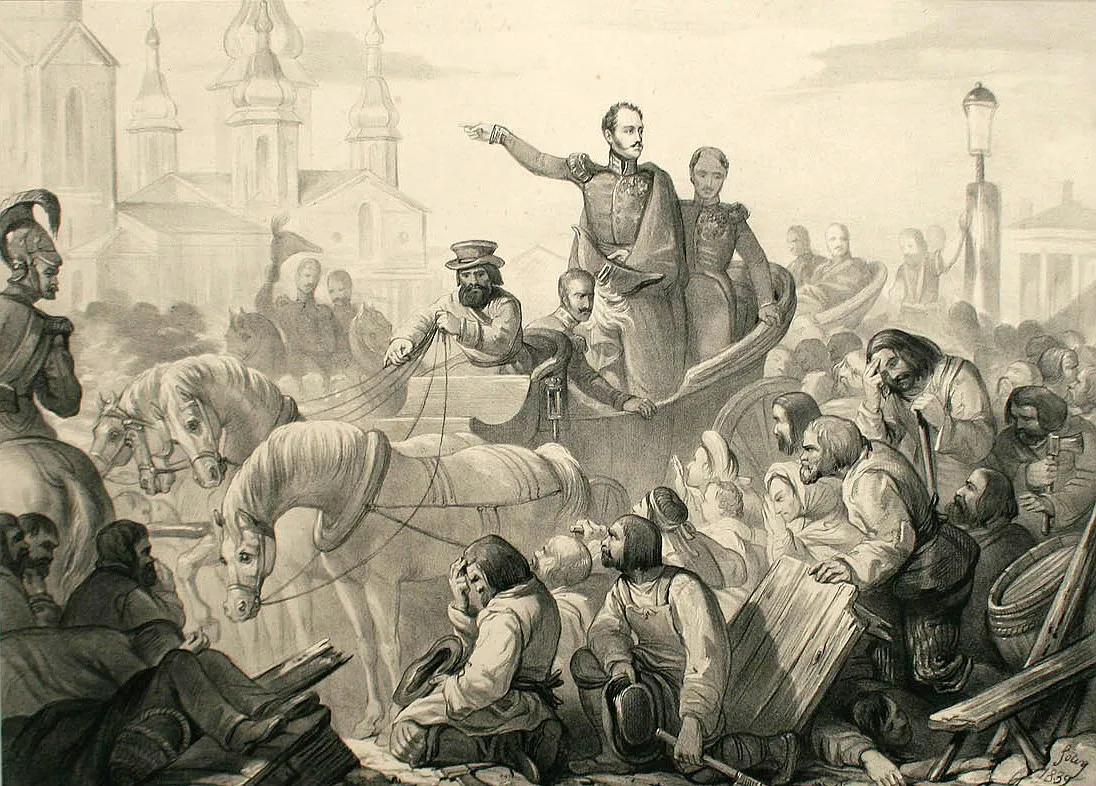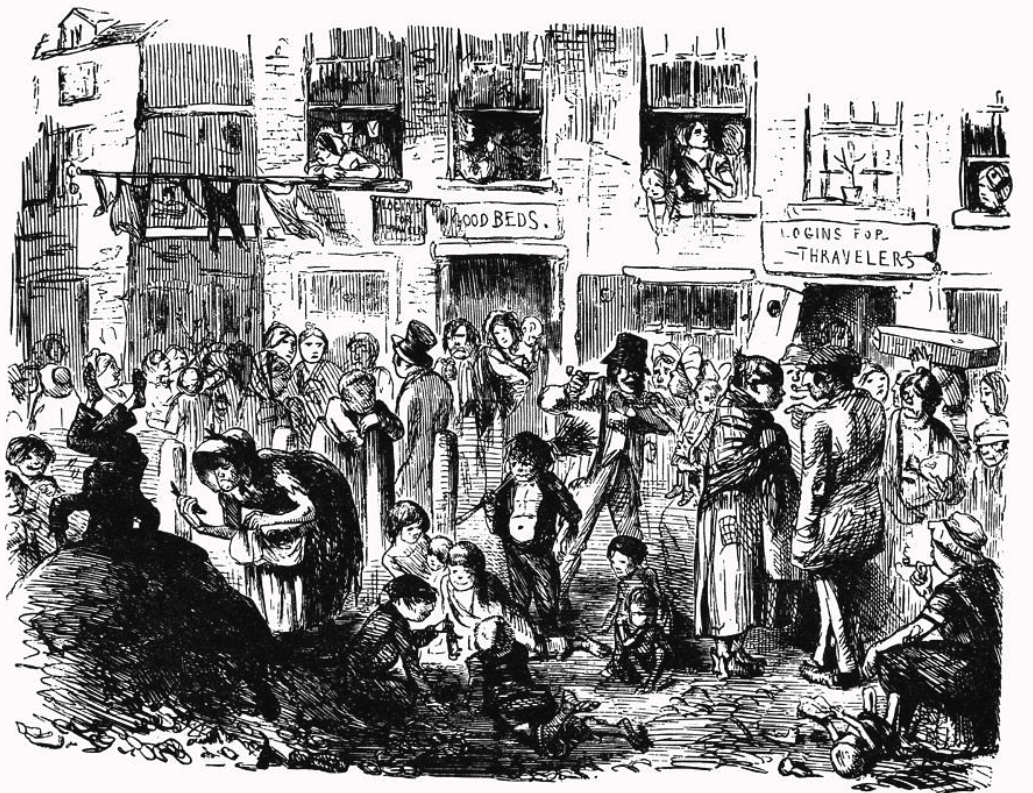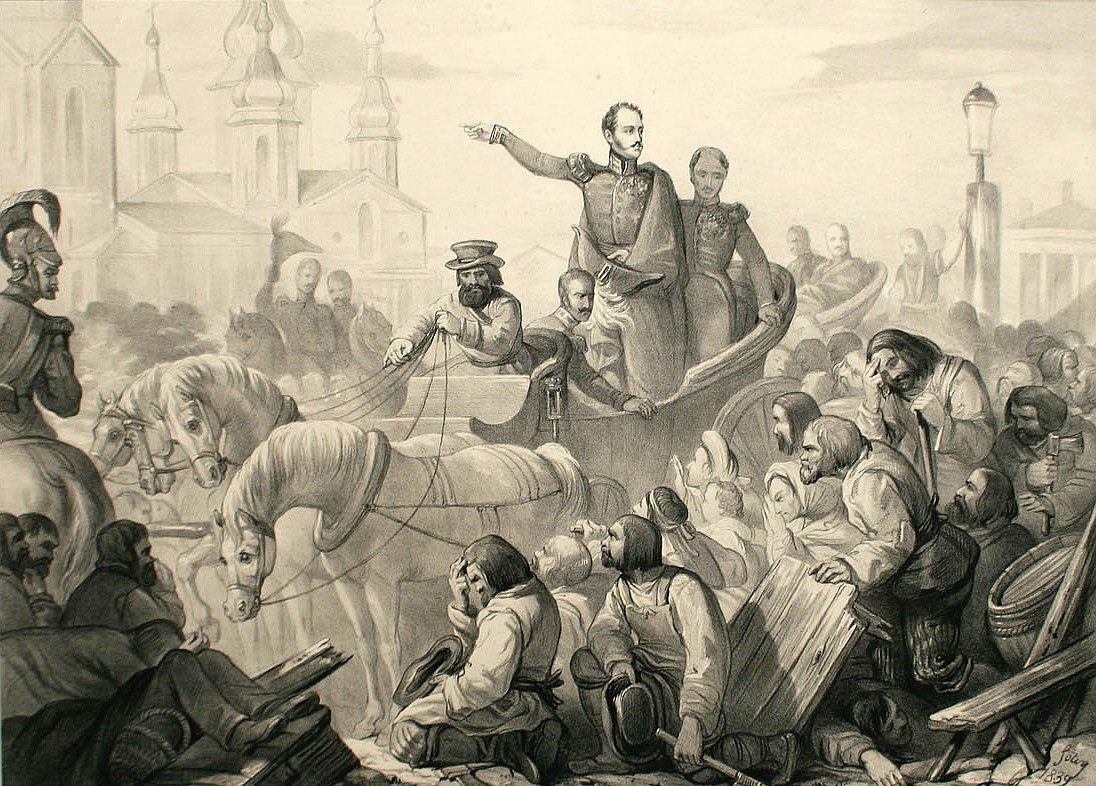Stolen bodies, a conspiracy theory and riots that gripped Liverpool in the time of cholera

An old tale with new resonance
The Brutus sailed from Liverpool on the 18th of May, carrying 330 passengers to Quebec. A newspaper report from the time says they were mostly farmers migrating to Canada to find bigger farms, including some from Manchester and rural Lancashire and lots from the South. Also on board were a surgeon and a clergyman, and the weather when the ship left port was said to be “calm and beautiful”.
Three and a half weeks later it was back at port, and 82 of its crew and passengers were dead. Whole families who had left together to make a new life had been buried at sea. Five members of the Gilks family from Oxfordshire were among the deceased. A whole family from Buckinghamshire - the Redheads - were dead. On one Sunday during the voyage, with an “awful splash”, 13 bodies had been committed to the deep. The ship had turned back when the captain lost his second mate and steward and worried he was running out of crew members.
Back in Liverpool, the surviving passengers were split up - the sick ones staying onboard and those who were well taken to quarantine for ten days on another ship as the city’s authorities began their investigation. It was 1832, and it was the time of cholera. “Asiatic cholera” as it was known then.
When the ship left harbour, the ports of London and Bristol were both closed on account of severe cholera outbreaks. The Brutus had been given a clean bill of health, which represented an assurance from the authorities that there was no cholera in Liverpool. That, it turned out, amounted to something of a cover-up - the city’s authorities looking to gain a trading advantage over their rivals at a desperate time.
About two weeks earlier, a young Liverpudlian called Murphy felt unwell and returned home from work after a night of heavy drinking. Soon he was “seized with spasms” and by the evening he was dead. The Liverpool Journal reported the news by telling its readers that “there were loud whispers through the town of the cholera having arrived in Liverpool”. Murphy was 17 and was fit - but the authorities chose not to alert the public about his death. Soon they would be forced to.

A sketch of a Liverpool slum around the time of the cholera outbreak
‘There go the murderers’
Between the ship’s sailing and its return, Liverpool had been gripped by violence. Eight riots had taken place in the space of just ten days. And the mobs weren’t angry with the authorities for letting cholera rip through the city. In fact, they didn’t think it was ripping through the city at all. They were cholera sceptics, who believed that Liverpool’s doctors were taking advantage of the outbreak to kill patients and steal their bodies for use as cadavers in medical schools. They were acting on what we would now call a conspiracy theory - albeit one that was grounded in some well-founded fears about the fate of human corpses after death.
As cholera swept the country, special hospitals had been set up across Liverpool in preparation, funded by wealthy citizens. By the end of May the disease had taken hold in Liverpool, particularly in poorer neighbourhoods with inadequate sanitation and multi-occupancy houses. By the end of the outbreak there were 4977 recorded cases of cholera and 1523 deaths. But that didn’t convince everyone that the disease was serious. Across the country, the term “cholera humbug” was used by those who believed the government was exaggerating the outbreak to distract from the controversial Reform Bill. In Liverpool, a different strand of scepticism emerged.
On May 29th, a patient suspected of suffering from the disease was taken to the cholera Hospital in Toxteth Park, when a mob appeared, shouting abuse at the doctors. According to newspaper reports, thousands of people then gathered outside the hospital after the patient was taken in, throwing stones and smashing its windows. They shouted things like “There go the murderers” and “Bring out the burkers” and the doctor looking after the patient was forced to leave. Other staff were attacked and hurt. The reference by the crowd to “burkers” points to the conspiracy theory that was motivating the mob: they believed the doctors were doing what the notorious Edinburgh murderers William Burke and William Hare had been caught doing just a few years earlier - killing people to supply the growing demand for bodies for medical education.
The Toxteth Park riot was followed by similar incidents in the days afterwards. Doctors attacked as they attended patients’ houses. Mobs taking sick people from their homes and hiding them elsewhere so that the surgeons couldn’t find them. An account in the Gores Advertiser says about one of the incidents: “The mob were shouting they were to be cut up, the surgeons were the getters up, there is no such thing as cholera in the town.”
Liverpool experienced the most intense cholera riots, but the disease had sparked violent unrest much farther afield. In Russia mobs rioted against lockdown restrictions called cordons sanitaires, killing several army officers. Hungarian noblemen were massacred and their castles sacked by mobs who believed they had intentionally poisoned the population. In both those cases, the violence was directed against political elites. So why did Liverpool’s mob focus its ire on the medical profession? A 2005 article in the Journal of the History of Medicine and Allied Sciences by the historians Sean Burrell and Geoffrey Gill helps to explain. And it points to a gruesome find at the port.

Nicholas I of Russia shown quelling a riot on the Sennaya Square in St. Petersburg
The bodies in brine
In 1826, six years before the cholera riots, 23 bodies were discovered in the docks. 11 of them were in casks labelled “Bitter salts”, waiting to be shipped to Scotland. The other 12 were found in a nearby cellar, stored in casks and immersed in strong brine. When the brine was poured out of one of the casks, the bodies of several babies tumbled out. At trial, it was revealed that the bodies had been taken from local cemeteries, with the intention of selling them to Edinburgh’s medical schools. The case meant that the threat of “resurrection men” - grave robbers who stole bodies for profit - was a subject of major concern in Liverpool.
A year later, another case came to light. The body of a publican’s daughter had been stolen from her grave at Walton churchyard in north Liverpool and was soon found in a surgeon’s house on Seel Street. At the same time, police found four other bodies in the same property, awaiting dissection. The surgeon defended himself on the grounds that improving the medical profession’s knowledge about human anatomy was more important than the fate of dead bodies and got away with only paying a fine.
Edinburgh was Europe’s centre of anatomical study, and aspiring doctors from across the country went there to be trained. But the law only allowed the bodies of prisoners, orphans, and suicide victims to be used for dissections, creating a large shortfall and a black market for murderers and resurrection men. Burke and Hare killed sixteen victims for sale in 1828 before they were apprehended and Burke was hanged. And in London, the murder and sale of a boy who became known as “The Italian Boy” by a gang of burkers in East London led to anger across the country, and widespread fears about body-snatching too.
In fact, when cholera arrived in Liverpool, an Anatomy Act was going through parliament that allowed medical professionals to apply for licenses to dissect any body that wasn’t claimed by family members, including hospital patients and destitute members of workhouses. “The poor really did feel they were being victimised by the medical profession,” says the historian John Belchem. “If you couldn't afford to have a burial, your body could just be taken to the medical schools,” he told The Post. “The poor think they are being considered as criminals because previously it was only the bodies of criminals which could be taken.”
‘You are greatly in error'
The population of Liverpool in 1832 was around 230,000, and about one in ten people in the city were Irish. The 1820s saw the advent of steam transport across the Irish Sea, and the first great flow of migration. Though there were many skilled Irish workers, the poorer casual labourers become known as the “low Irish” because they lived under the sandstone ridge, says Belchem. “They live in the low-lying part of the town, which is the least sanitary and the most crowded,” he told The Post. “They are clustered in cellars and multi-occupancy houses.”
Fears about burking and body snatchers were particularly strong among a mostly pious community who strongly believed in the importance of a wake after death. “The sanctity of death remains absolutely crucial to even the lowliest of these people - it runs very very deep,” says Belchem, whose book Irish, Catholic and Scouse explores the experience of Irish immigrants in the city. “It's true of any poor, working class community in the country, and it's accentuated within an Irish catholic setting.”
Newspaper reports identified the Irish as significant participants in the cholera riots, and it took the intervention of the Catholic Church to put an end to the unrest. After ten days of rioting, a message was read out from every Catholic pulpit, urging the mobs to stop. “We understand that some of you disbelieve entirely the existence, in this town, of the disease,” it said, referring to the scepticism among the mobs, and telling them: “you are greatly in error.” It announced new measures that would reassure families of the sick and dead. “Orders have been issued, that the relations of those who die in the hospital shall be allowed to see the bodies of the deceased before their coffins are closed,” it said.
Permission was also granted to relatives to check in on their sick relations in the hospital “under certain regulations necessary for preventing infections.” The statement read out by the priests and printed in The Liverpool Journal added: “It only remains for us to exhort you, as we earnestly do, to lay aside unfounded prejudices, and to concur with those who are your best friends in arresting the progress of a fatal disease, which, within a few days, has extended its progress amongst us in a most fearful manner.”
If you think a friend might enjoy this story, please forward it to them and tell them about The Post.
If this story was forwarded to you or you found it online, please join The Post’s email list to get great journalism and factual reporting on the pandemic in your inbox.
We are looking for great writers and reporters who can help build The Post into a thriving new media outlet that is dedicated to this city and region. If you would like to write for The Post on a freelance basis or join on staff in future, get in touch by replying to this newsletter or sending us a DM on Twitter.

Comments
Latest
The men who raised the flags
On the Wirral, public trust goes up in smoke
Gerard Woodhouse pleads guilty to harassment. “Jail him,” says his victim
The tide is turning
Stolen bodies, a conspiracy theory and riots that gripped Liverpool in the time of cholera
An old tale with new resonance